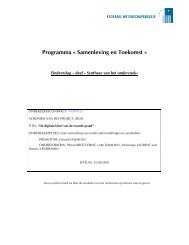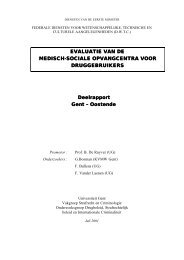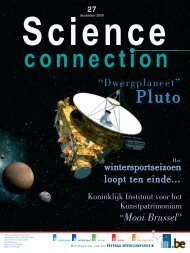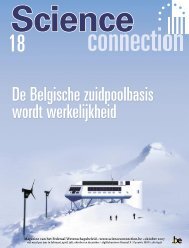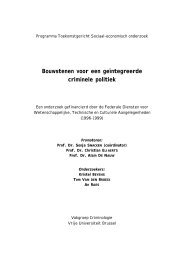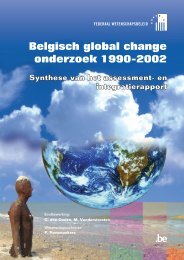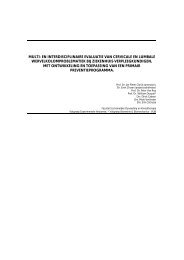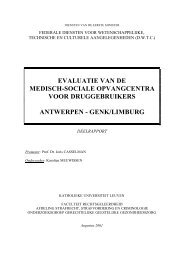chapter 3 inventory of local food systems
chapter 3 inventory of local food systems
chapter 3 inventory of local food systems
You also want an ePaper? Increase the reach of your titles
YUMPU automatically turns print PDFs into web optimized ePapers that Google loves.
Project CP/59 - “Instruments and institutions to develop <strong>local</strong> <strong>food</strong> <strong>systems</strong>”<br />
more sustainable <strong>food</strong> consumption. Marketing strategies, but also e.g. the Slow Food<br />
movement, are eager to attend to this.<br />
1.2.2.2. Consumer motivation<br />
It is slowly becoming clear that individual consumer decisions make a difference for the<br />
entire community (Libby, 2004), in the financial, ecological and social field. It is<br />
therefore important to pay attention to the consumer philosophy.<br />
Various studies have been carried out to examine the motivation <strong>of</strong> consumers to use<br />
certain products. It seems that not only the own well-being is important, but that the<br />
consumer also takes into account other social aims (O’Hara and Stagl, 2002). Subjects<br />
such as equity and dignity in social relations do play a role in consumer preferences. For<br />
example, the principal objective <strong>of</strong> the <strong>local</strong> network <strong>of</strong> ‘Community Supported<br />
Agriculture’ (CSA) is to provide consumers with healthy, <strong>local</strong>ly grown <strong>food</strong>. Apart from<br />
that, other important aspects are the <strong>local</strong> <strong>food</strong> economy, <strong>local</strong> <strong>food</strong> security, the<br />
protection <strong>of</strong> the environment and the maintenance <strong>of</strong> small-scale family farms that<br />
produce <strong>food</strong>. Through this CSA, the consumer is made conscious about regional <strong>food</strong><br />
<strong>systems</strong>. A continuous and direct contact between the various actors is crucial to bring<br />
about the cooperation.<br />
A continuously growing group <strong>of</strong> consumers questions the origin <strong>of</strong> <strong>food</strong>, the way it is<br />
produced and who it is produced by (Hendrickson and Hefferman, 2002). These<br />
consumers usually choose alternatives for the <strong>food</strong> that is being produced on a large<br />
scale, and base themselves on social and economic justice, as well as on the ecological<br />
impact <strong>of</strong> industrialised <strong>food</strong> <strong>systems</strong> and the concern for small farmers and rural<br />
communities. For Whatmore (1995), the rejection by certain consumers <strong>of</strong> industrial<br />
<strong>food</strong> production is an important basis for new cooperative associations and networks<br />
between consumers and farmers.<br />
To conclude the subject <strong>of</strong> consumer motivation, one can say that consumers choose<br />
certain products based on a combination <strong>of</strong> personal desires and the options <strong>of</strong> the<br />
product to fulfil these desires. Earlier research (Vackier et al., 2003) indicates three<br />
important motivation structures in consumers’ choice, in favour <strong>of</strong> sustainable <strong>food</strong><br />
products:<br />
• health and the security that a product is not damaging from an individual health<br />
perspective, are a primary motivation;<br />
• in the second place, one can notice a hedonistic cluster <strong>of</strong> factors: the value <strong>of</strong><br />
enjoying a meal;<br />
• a third cluster comprises a number <strong>of</strong> values that favour the entire community.<br />
One can say that the foundation there<strong>of</strong> is the longing for a group feeling. This<br />
third cluster seems, compared to the other two, to come more to the surface<br />
when one is searching a common denominator <strong>of</strong> different initiatives.<br />
SPSD II - Part I - Sustainable production and consumption patterns - Agro-Food 13



